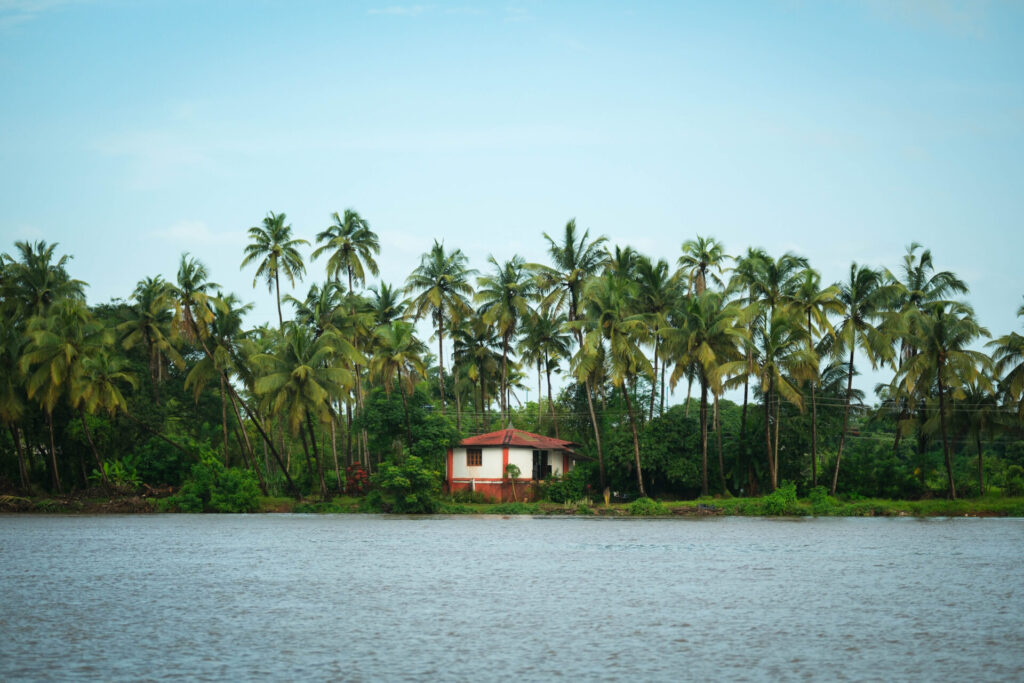Goa’s rich Portuguese heritage continues to shape its architecture, culture, and traditions. Its unique architectural blend of Baroque, Manueline, and Gothic styles is seen in landmarks like the Basilica of Bom Jesus and Sé Cathedral, as well as the colorful Latin Quarter of Fontainhas. Music and festivals like Fado, Mando, and Carnival reflect Portuguese influence, while Konkani retains Portuguese words. Goan cuisine, with dishes like Pork Vindaloo and Bebinca, is a fusion of Indian and Portuguese flavors. Despite modernization, Goa preserves its heritage, embracing the susegad lifestyle while honoring its colonial past through architecture, music, cuisine, and cultural traditions.
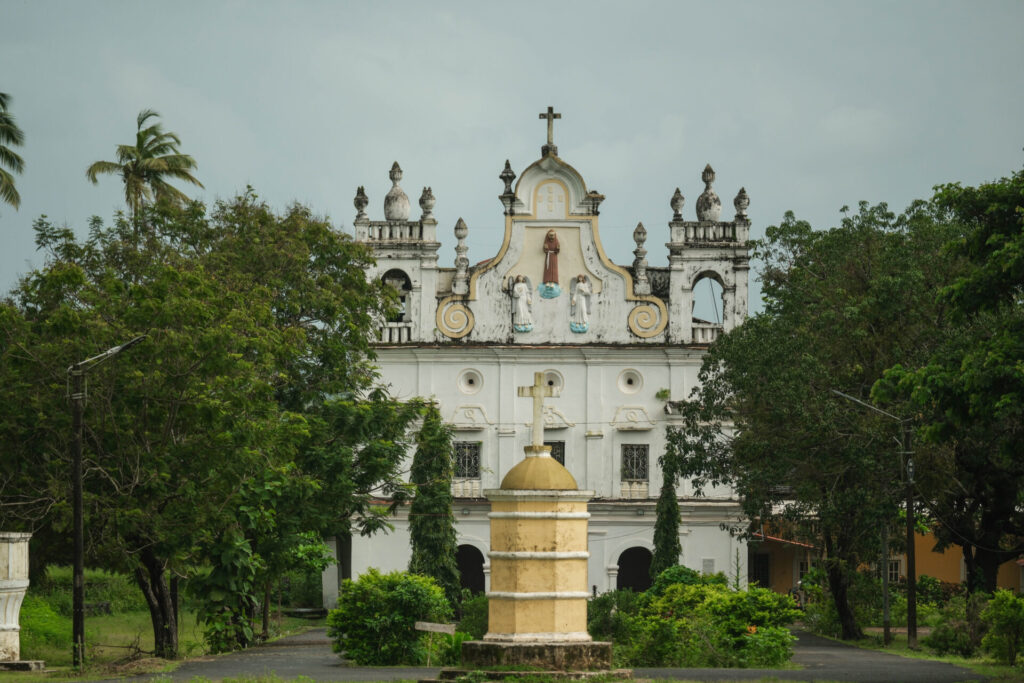

Colvale Church
Goa’s charm lies not just in its sun-kissed beaches and vibrant nightlife but also in its rich history and deep-rooted Goan heritage. The region’s identity has been shaped by centuries of cultural exchange, most notably by the Portuguese influence, which continues to define its architecture, traditions, and way of life. From the grand churches of Old Goa to the colorful lanes of Fontainhas, every corner of Goa tells a story of its colonial past, seamlessly blending European elegance with Indian vibrancy.
One of the most striking remnants of Portuguese influence in Goa is its architectural landscape. Goan architecture is a harmonious mix of Baroque, Manueline, and Gothic styles, adapted to the local climate and materials. Unlike other parts of India, where Mughal and Rajput influences dominate, Goa’s built heritage stands apart with its distinctive European aesthetics.
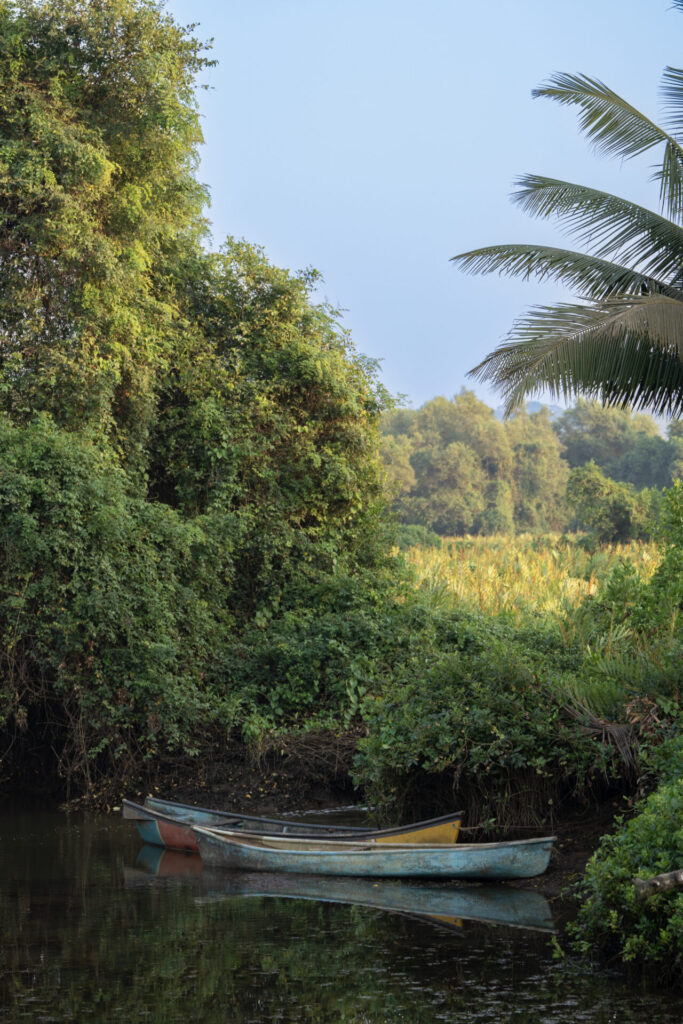

Aldona, Goa
The Basilica of Bom Jesus, home to the relics of St. Francis Xavier, stands as a testament to this fusion. Its intricate gilded altars, Mannerist embellishments, and grand Baroque facade reflect a style that is both majestic and spiritually uplifting. Just a short distance away, the Sé Cathedral, the largest church in Asia, exemplifies Tuscan grandeur. Its imposing structure, adorned with intricate carvings and housing the famous Golden Bell—said to be one of the finest in the world—symbolizes the strength of Portuguese architectural influence.
But the Portuguese imprint is not limited to churches alone. Fontainhas, Goa’s Latin Quarter, is a living, breathing postcard from the past. Walking through its narrow, winding streets is like stepping into a European town. The pastel-colored houses, with their red-tiled roofs, wooden balconies, and oyster-shell windows, reflect colonial-era aesthetics while blending seamlessly with Goan craftsmanship. These homes are not just relics but living spaces, lovingly preserved by generations of Goans who take immense pride in their heritage.
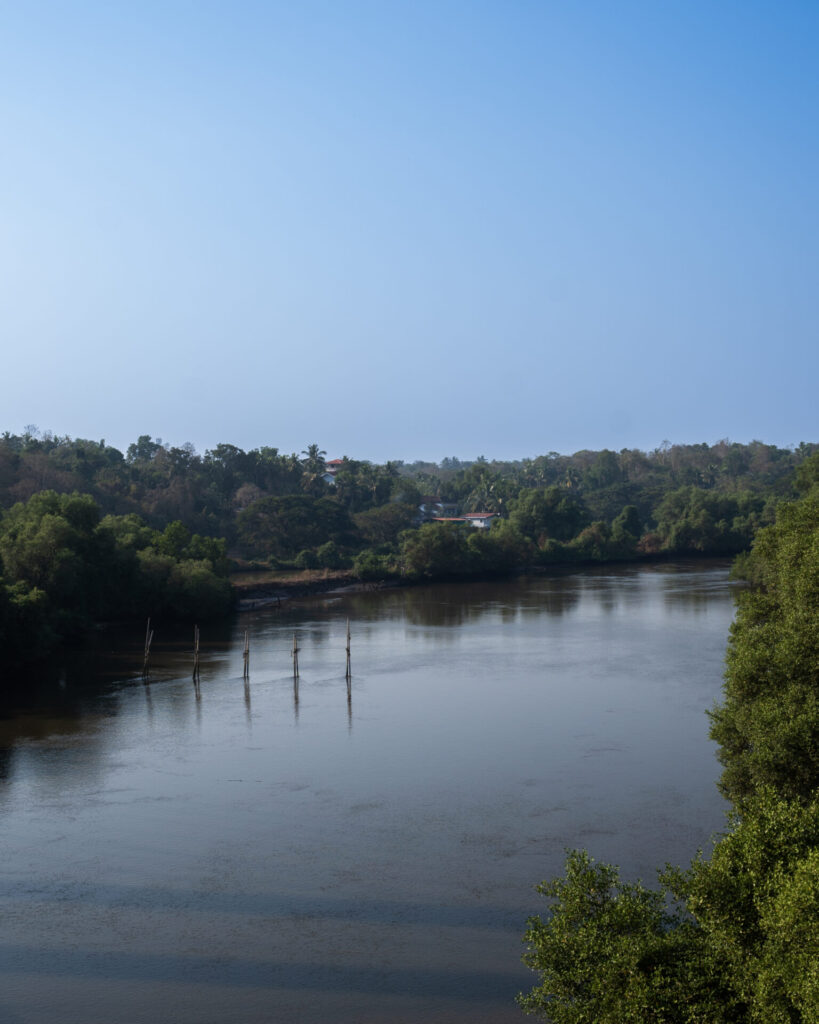

Aldona, Goa
Beyond Fontainhas, grand mansions such as the Braganza House in Chandor and the Figueiredo House in Loutolim offer glimpses into an opulent past. With vintage chandeliers, Indo-Portuguese furniture, and elaborate mosaic flooring, these estates stand as living museums. Many of these homes still belong to their original families, a testament to the enduring legacy of Portuguese architecture and its continued significance in modern Goan life.
The Portuguese influence in Goa extends far beyond its buildings; it is deeply woven into the fabric of Goan culture. The Portuguese brought with them not just their language and religion but also their customs, festivals, and culinary traditions, which have been embraced and adapted by the local population.
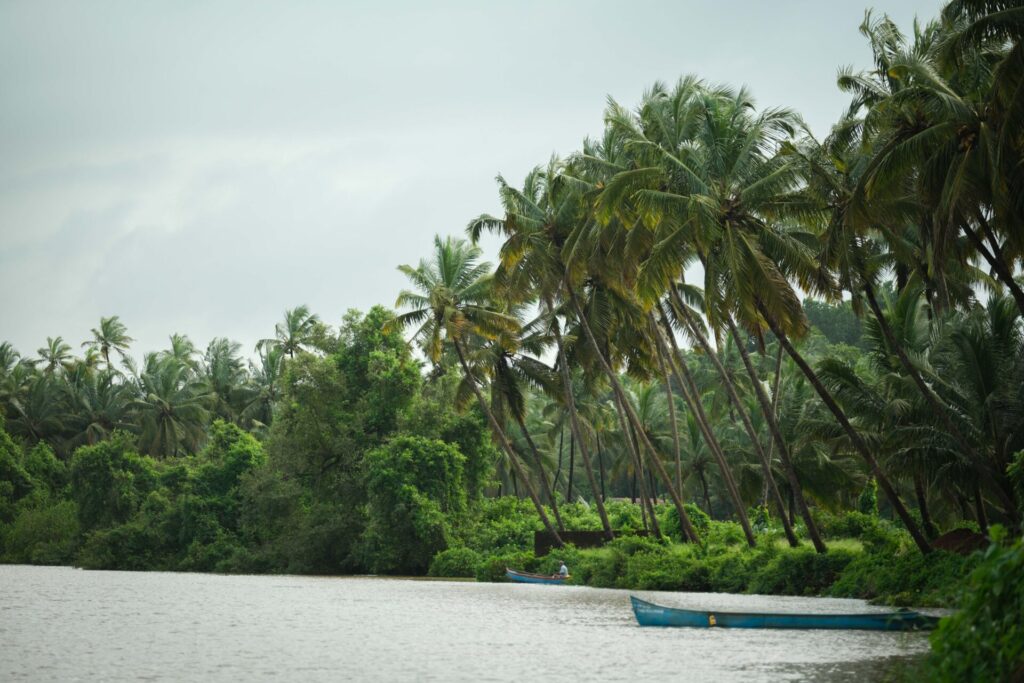

Colvale, Goa
Music is an integral part of Goan culture, and its melodies echo the state’s colonial past. Traditional forms like Fado and Mando have roots in Portugal but have evolved into uniquely Goan expressions. Fado, a melancholic and soulful music genre, tells tales of love and longing, while Mando, a blend of Indian and Portuguese musical traditions, is often performed at Goan weddings and social gatherings. Accompanied by string instruments like the guitar and violin, these songs capture the essence of Goa’s Indo-Portuguese identity.
Goa’s Carnival, an exuberant pre-Lenten festival, is another legacy of Portuguese rule. Unlike any other festival in India, it features colorful parades, elaborate floats, masked revelers, and energetic street performances. Originally introduced by the Portuguese in the 18th century, the festival remains one of Goa’s most anticipated celebrations, attracting visitors from around the world.
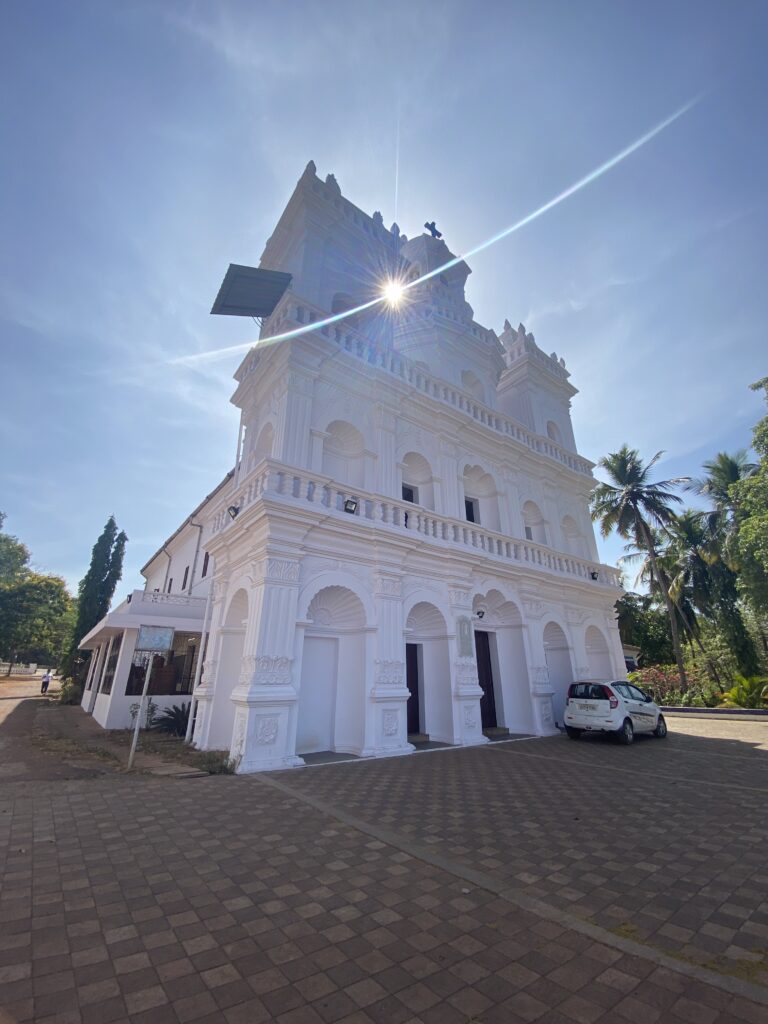

Moira Church
Even today, the Portuguese language lingers in Goan daily life. Many families still use Portuguese words in their conversations, seamlessly integrating them into Konkani, the local language. Words like janela (window), sapato (shoe), and mesa (table) are common, reflecting the deep cultural ties between Goa and Portugal. Additionally, many Goan surnames—D’Costa, Pereira, Fernandes—are of Portuguese origin, further embedding the colonial past into contemporary identity.
No discussion of Goan culture would be complete without mentioning its cuisine, a delightful blend of Indian spices and Portuguese flavors. The Portuguese, who controlled Goa for over 450 years, introduced vinegar, potatoes, tomatoes, and chilies, transforming Goan cuisine into what it is today.
Pork Vindaloo, one of Goa’s most famous dishes, originates from the Portuguese dish Carne de Vinha d’Alhos, which translates to “meat marinated in wine and garlic.” In Goa, it evolved to include local spices, creating a fiery, tangy delicacy. Xacuti, a rich, coconut-based curry, reflects Portuguese stew-making traditions, infused with Goan ingredients like poppy seeds and Kashmiri chilies. Bebinca, a layered coconut and egg dessert, remains a festive favorite, especially during Christmas, mirroring Portugal’s love for sweet, egg-based confections.
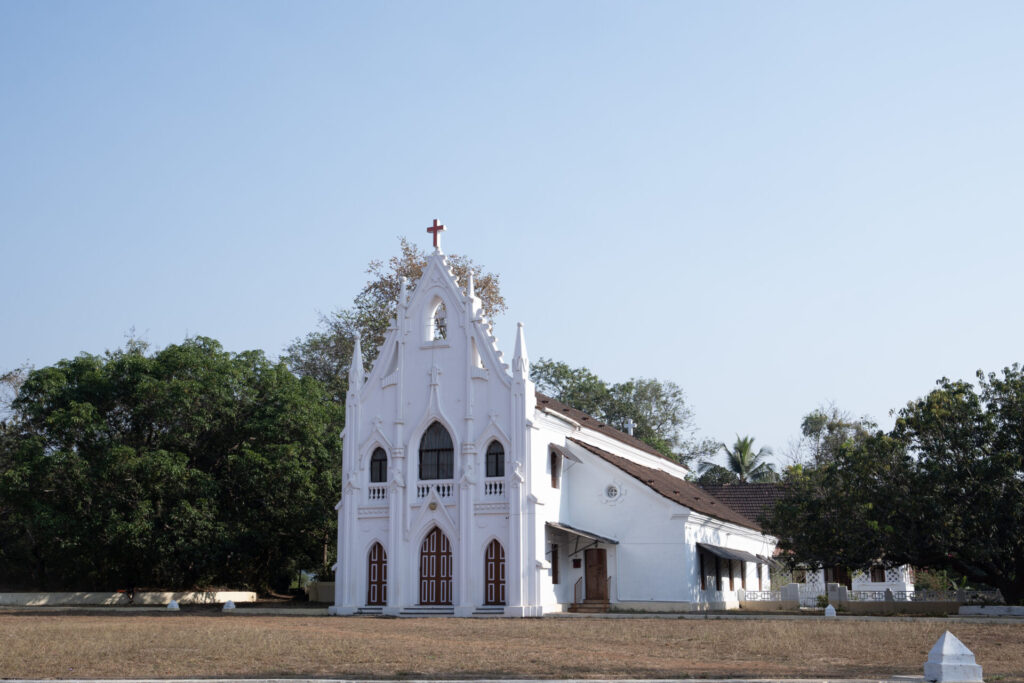

Aldona Church
The introduction of bread-making techniques also left a lasting impact. The beloved pão (Goan bread), a staple in every Goan home, is a direct result of Portuguese culinary influence, baked fresh daily by local poder (bakers).
Despite modernization, Goa’s heritage remains beautifully preserved. Many Goan families still maintain their ancestral Indo-Portuguese homes, ensuring that their legacy endures. Government and private initiatives are also working towards conserving heritage sites and promoting sustainable tourism. Organizations like the Goa Heritage Action Group advocate for the preservation of historic buildings and cultural landmarks, preventing them from being lost to urbanization.
The concept of Susegad, often associated with the Portuguese influence in Goa, also plays a role in keeping traditions alive. This relaxed and content way of living is deeply ingrained in Goan society, where leisure, family, and celebration take precedence over the hustle of modern life. The result is a place where history is not just remembered but actively lived, where old traditions seamlessly coexist with contemporary lifestyles.
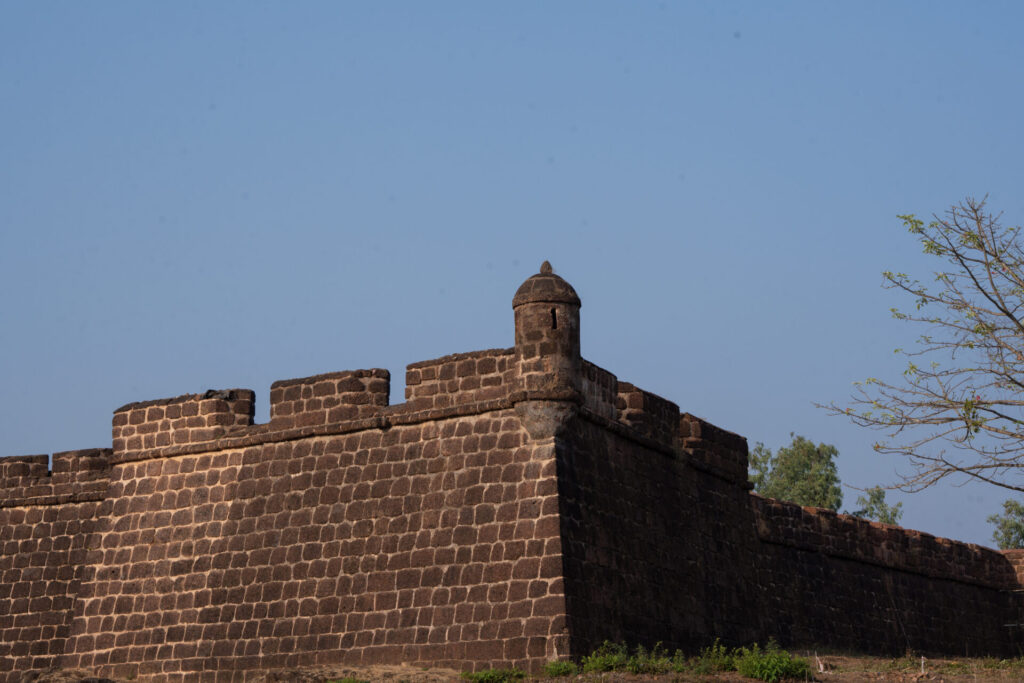

Aldona, Goa
Goa’s ability to blend its Indian roots with its colonial past makes it one of the most unique cultural hubs in the world. Whether strolling through the vibrant streets of Fontainhas, indulging in a plate of Sorpotel, or marveling at the grandeur of Old Goa’s churches, the Portuguese influence in Goa remains alive, shaping the present while honoring the past.
For those who seek to experience Goan heritage beyond its beaches, the state offers a world rich in history, art, and tradition—a true testament to its colonial legacy and enduring charm. While Goa moves forward, embracing modernity and progress, it continues to hold on to the essence of its past, ensuring that the Portuguese influence remains an integral part of its cultural fabric for generations to come.
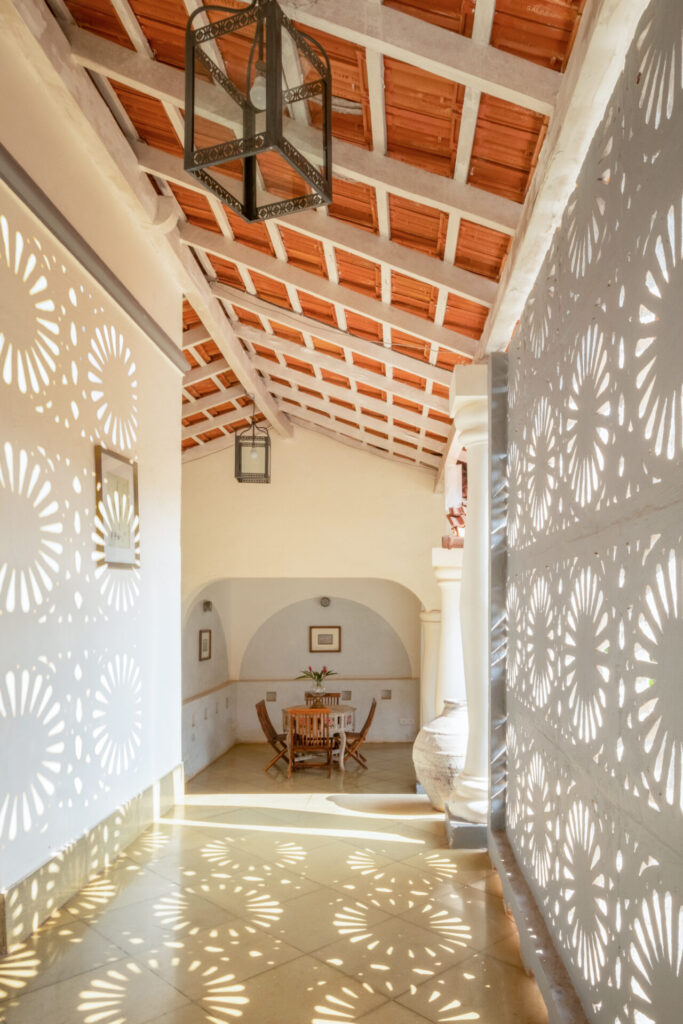

Villa Branco


